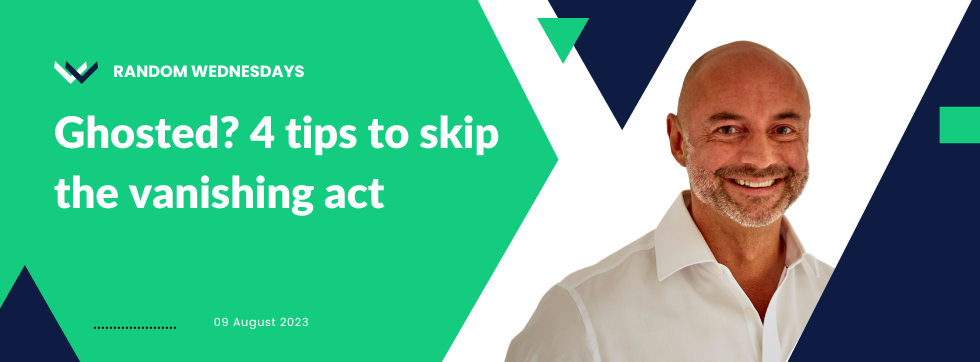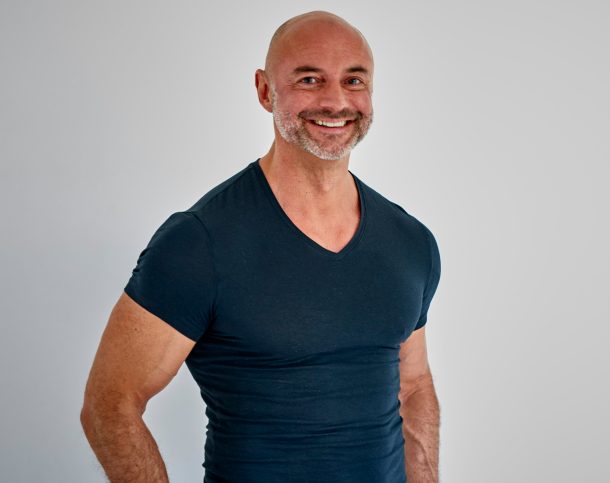Are your prospects ghosting you?
Were you convinced you had a new client only for them to vanish without trace?
In the graveyard of phantom clients lies the eternal questions.
What the hell happened?
How do I react?
Why me?
Ghosting happens when a prospect you’ve been talking with suddenly disappears.
It might be at the beginning of a conversation, during the discovery process or at the end of a proposal.
It may also occur when you’ve got a “Hell Yes!”
Then without warning, all contact is savagely severed.
No text, calls, emails, messages – zilch, zip, nada!
You’re left hanging and haunted.
Sounds familiar?
Being ghosted isn’t exclusive to the dating world, it’s part of the coaching landscape too.
But what if you don’t believe in ghosts?
What if it’s not them; it’s you?
Spooky!
Could you be missing the silent signals they’re sending throughout the journey?
Failing to recognise them might lead you to being ghosted without knowing why.
Today we’ll break down the “buyers journey.”
We’ll shine a light on the different stages so you can convert more prospects to long term clients.
Gather your torch.
#1. Understanding the Buyer’s Journey
The Buyer’s Journey is the process your prospects go through before deciding to invest in your services.
The framework has four key stages.
- Awareness: I have a problem. How do I address it?
- Approach: I have an understanding. What are my options?
- Assessment: I know what I want. Who’s a good fit?
- Approval: I’m ready to invest. How can I justify it?
To illustrate, we’ll apply this framework to a prospect called “Natalie”.
Natalie is a newly, certified professional coach ready to kickstart her career. She’s eager to make a difference, but feels overwhelmed by the prospect of starting her own business.
Stage 1: Awareness
- Natalie realises launching a successful coaching business requires further skills and knowledge.
- She’s aware an expert coach might be instrumental in guiding her towards her goal.
Stage 2: Approach
- Investigates potential expert coaches to work with.
- Considers their experience, coaching style, fees and results they’ve achieved with previous clients.
Phase 3: Assessment
- Looks for a coach whose style aligns with her needs and who can help her achieve her goals
- Considers the chemistry felt during initial exchanges.
- Weighs the potential benefits of hiring a coach comparing services, packages, cost, etc
Phase 4: Approval
- Seeks assurance she’s making the right choice.
- Consults with her trusted circle to gain further insights and validation
- Willing to commit to a coaching agreement.
Knowing these four stages, makes it easier for you to find the right message for Natalie at the right time.
#2. Ghostly errors to avoid
Overlooking the prospects journey is a deathly trap.
Here are 4 lethal missteps to catch for each stage.
Stage 1: You’re overwhelming them
In the primary phase, Natalie is only trying to understand her problem, not look for solutions.
Overloading with information can feel overwhelming.
She may disengage to avoid pressure.
Stage 2: You’re too generic
Natalie is searching for a solution to fit her specific needs.
If your marketing material or approach is too generic she may not see how your coaching can help her.
Stage 3: Your touch is impersonal
In this phase Natalie wants to feel heard, understood and valued.
If your communications feels automated or impersonal it’s a frightful turn off.
Furthermore, if the chemistry doesn’t feel right, it will kill the vibe stone dead.
Stage 4: Your value proposition is unclear
In the final stage, Natalie wants to feel convinced of the value she’ll get from your coaching.
If she can’t clearly see the benefits, she’ll be hesitant to invest her time and money.
Recognising these pitfalls is the first step towards improving your interaction.
The second is to become more intentional at each stage of the journey.
#3. Guide and glide
Let’s explore some ideas to guide and glide Natalie through each phase of her Buyer’s Journey.
Stage 1: Educate and Inform
- Content: Educate Natalie with high-quality, informative content addressing her challenges and goals.
- Webinars/workshops: Hold insightful online events, and build trust through direct engagement.
- Email newsletters: Send informative email newsletters with useful tips, to educate and inspire.
- Social media: Engage on social media with posts that add value and build credibility.
- Free resources: Provide free tools, templates, and resources that support her needs.
Stage 2: Highlight your unique value
- Clarity: Tailor your communication to speak directly to Natalie’s needs and wants.
- Confidence: Provide inspiring client success stories that showcase your unique coaching style.
- Differentiate: Stand out! State what makes you unique and why you’re different.
Stage 3: Make it personal
- Discovery call: Offer a free discovery call, let her experience your coaching style.
- Personal connection: Make every communication personal. Wherever possible focus on real conversations rather than email or text.
- Q&A: Host an interactive 1-on-1 Q&A session and create a personal, engaging space for interaction.
Stage 4: Don’t sell, show
It’s crucial for Natalie to sell herself on the benefits of investing with you, not the other way around.
Evidence based: Share success stories. Put her in contact with clients who have achieved success with you.
Challenge the yes: Don’t accept “yes” is yes. Challenge the yes. Slow things down.
Share stories of previous people who said yes and who ghosted.
Challenge the commitment, challenge the readiness, challenge the concerns.
#4. Turning prospects into happy clients
It’s impossible to plug every touch-point and understand why a prospect has ghosted you.
People ghost for many reasons.
- They want to avoid confrontation or an uncomfortable situation.
- They don’t want to hurt or offend you.
- They don’t know how to handle a particular conversation
- They find it scary to say no.
Ghosting is a coping mechanism.
A passive way to withdraw.
Whilst ghosting feels personal, it’s vital to re-frame.
You’re not responsible for your prospect’s actions.
Nor is it healthy to blame someone else for vanishing into thin air.
Maybe they weren’t the right client for you, and you weren’t the right coach for them.
Perhaps you weren’t ready.
Here are some valuable questions to consider after being ghosted.
Be curious.
- How well did I communicate?
- Where can I improve my message to be clearer and more engaging?
- How empathetic was I to queries and concerns?
- How well did I understand their true needs, goals and challenges?
- How can I improve my approach to be more tailored?
- What success stores, testimonials or outcomes can I share?
- What extra value can I provide when following up?
Conclusion
Navigating the Buyer’s Journey might seem complicated. Yet it’s vital to master in building a successful coaching practice.
Understanding the nuances of each stage creates a more client centred approach.
This will not only help you be more successful it will help you avoid the common pitfalls.
Have you experienced ghosting?
Do you see room for improving the way you’re currently handling each stage?
What stood out for you today?
I’d love to hear from you.
Drop me an email and share your thoughts and experiences.
Today’s Key Action Tip
Prioritise active listening in every interaction with your prospects.
Why?
When you actively listen, you’re not just hearing words; you’re delving deep into what your prospects genuinely need.
This allows you to tailor your solutions, address their specific pain points, and ensure your offerings align seamlessly with their Buyer’s Journey.


